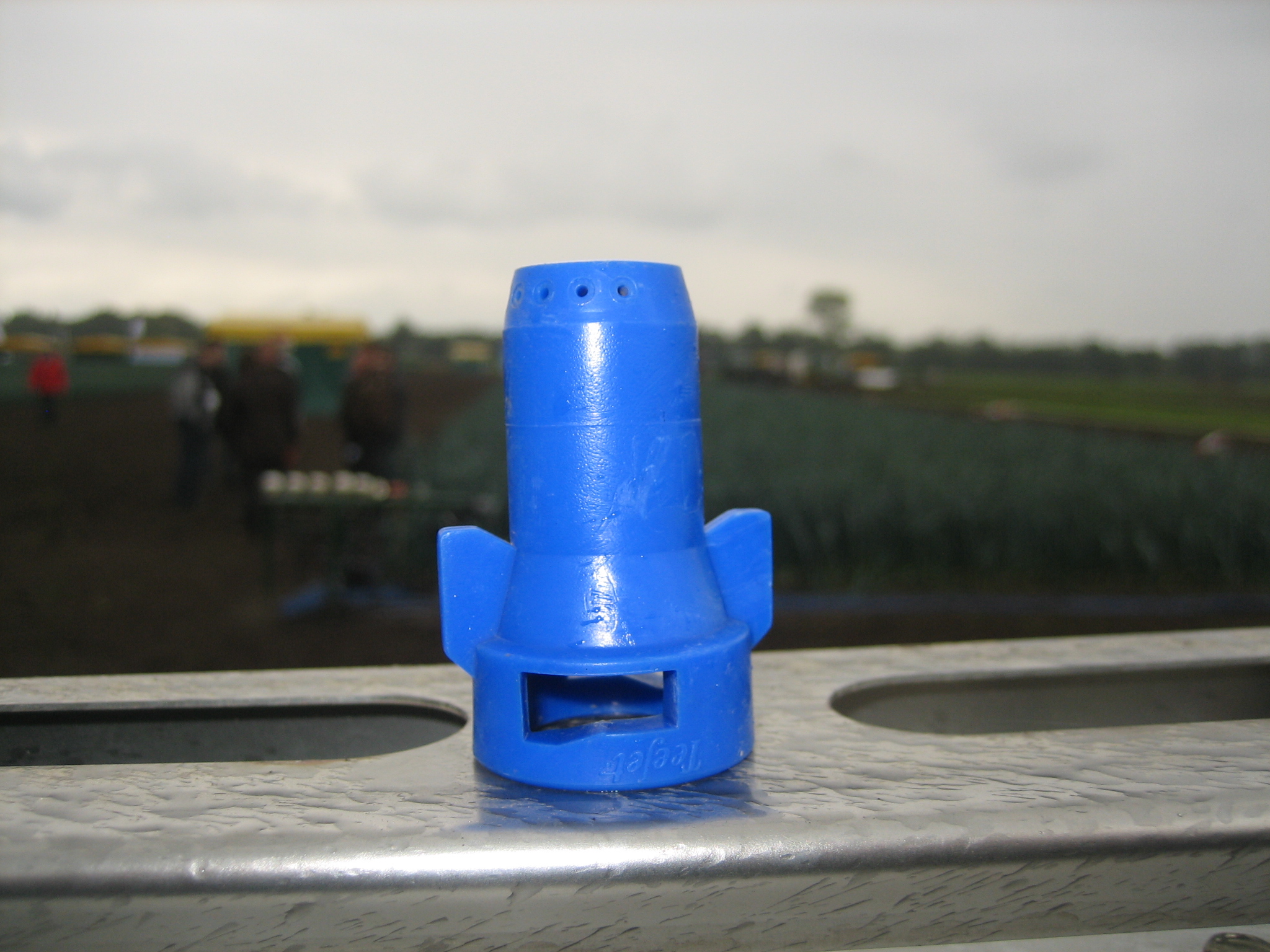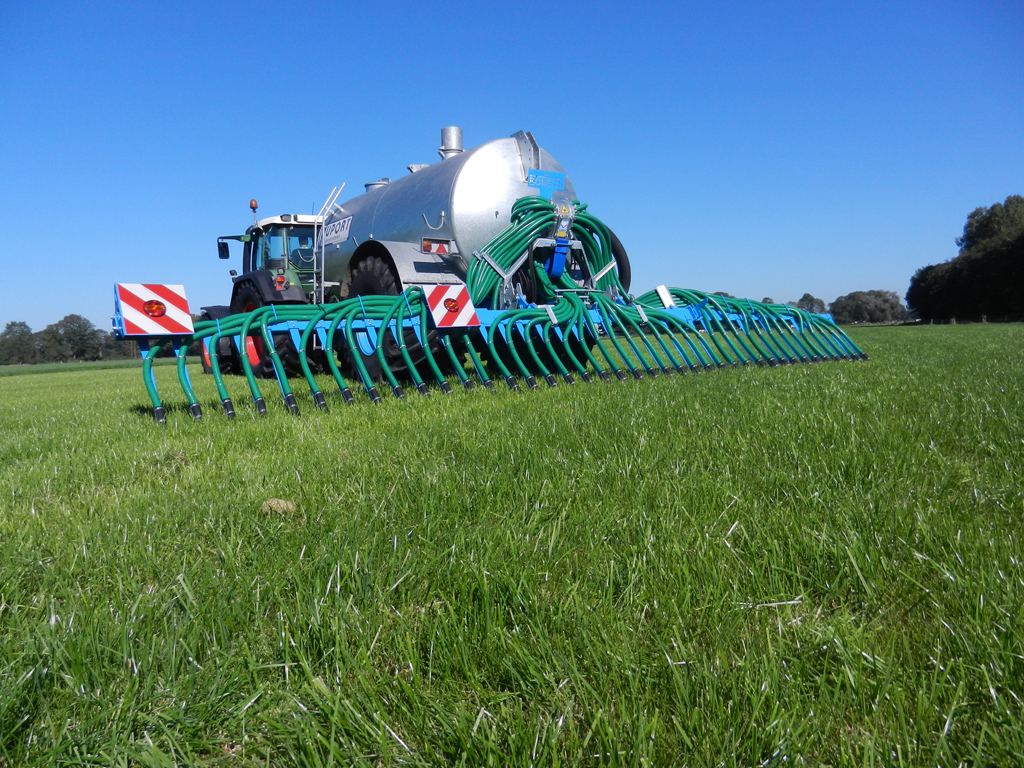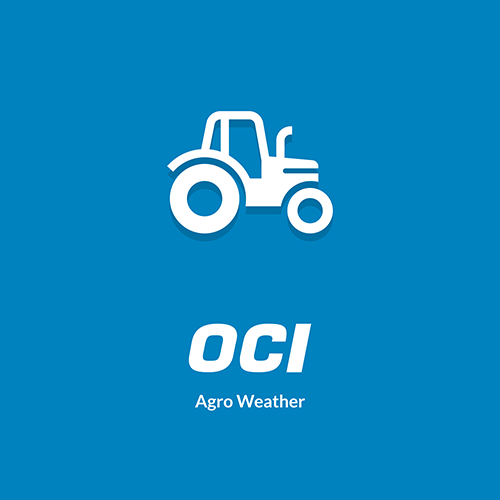Advantages and disadvantages of applying Liquid Fertilisers
As an alternative to spreading granular fertilisers, you can choose to apply liquid fertilisers. In recent years, the use of liquid fertilisers has been booming. This was mainly because they were generally cheaper than granular fertilisers and because they can be applied more precisely.
General
Liquid fertilisers can be applied in various ways. In basic fertilisation, liquid fertilisers are mostly applied with a field sprayer. Row fertilisation is on the rise, where the application of liquid fertilisers is often combined with planting or sowing. In foliar fertilisation, liquid fertilisers are mainly applied dissolved with nozzles or concentrated with hoses.
Volatilisation
Nitrogen applied as liquid mineral fertilisers can volatilise. This usually occurs during the conversion of urea and ammonium to nitrate nitrogen in the soil. Significant ammonia losses can occur during this conversion. The level of losses depends on weather conditions and application.
To avoid volatilisation as much as possible, it is important that the fertiliser is applied under the right conditions. Under unfavourable conditions, a lot of ammonia volatilisation can occur, resulting in the loss of valuable nitrogen.
The largest nitrogen losses occur during:
- Above-ground application;
- Dry weather and wind;
- Temperatures higher than 15 °C;
- On sandy soils;
- On soils with high pH (clay);
- In direct contact with the air (open or short crop).
Materials
When applying liquid fertilisers, the choice of materials is very important, as liquid fertilisers can be very aggressive to certain materials.
The following materials are suitable for storing and handling liquid fertilisers:
- Steel alloys;
- Plastics: PVC, Nylon, PE, Polyester;
- Nozzles: ceramic, plastic or stainless steel.
The following materials are not suitable for the storage and handling of liquid fertilisers:
- Copper;
- Bronze;
- Zinc;
- Galvanised iron.
Spraying
The most common way of applying liquid fertilisers is spraying with a field sprayer. When spraying liquid fertilisers, it is important that the conditions are right. Furthermore, the choice of nozzles is a point of attention to achieve correct distribution.
Spraying conditions
When spraying liquid fertilisers, the following conditions are important:
- The crop must be dry
- Do not spray in full sun;
- Preferably spray in the evening;
- The crop must have a strong wax layer;
- Spray with a coarse drop and low pressure;
- After rain, delay application by two days;
- No water should be applied on cold nights or night frosts;
- Do not apply more than 10 kg nitrogen per hectare by foliar application.
Spray conditions are ideal with a dry crop, cloudy skies and towards evening.
When spraying, it is important to have dark and growing weather conditions so that the fertilisers can be properly absorbed.

Cap choice
When spraying liquid fertilisers, the choice of nozzles is very important to achieve correct distribution, avoid crop damage and work as efficiently as possible.
Liquid fertilisers can be sprayed with or without water. Liquid fertilisers without water are highly concentrated. If the dosage is high, a nozzle or drag hose system should be used. Liquid fertilisers with water as a transport medium are low concentrated and serve as foliar fertiliser. At lower doses, a nozzle can be used.
When spraying fertilisers without water, the risk of leaf burn is higher because the concentration is high. Therefore, it is important to minimise leaf touch during spraying. This can be achieved by using a cap with few jets. Jet caps are available in three, five or seven jets With a three jet cap, there is hardly any drift. The disadvantage when using such a cap is that the distribution of the fertiliser is not always optimal. Especially when applied in grassland, spreading strips can then be seen. When fertilising for the first time, it is recommended to use a seven-jet cap with several jets for good distribution.
When spraying fertilisers with water as the transport medium, the aim is to hit as many leaves as possible so that there is good uptake by the leaves. These fertilisers can be sprayed with the same nozzles used in crop protection.Fertilisers in combination with
GBM

Fertiliser spraying is regularly done together with plant protection products. A major advantage is that the crop protection product is better absorbed by the crop. A disadvantage of this is that a low dose makes it difficult for the fertiliser to be absorbed by the plant and therefore cannot be fully utilised.
When using plant protection products with emulsifiable concentrates (EC) against weeds, the wax layer of the plant is affected. No liquid fertiliser should be applied soon after EC agents are applied, as the risk of burning is very high. However, EC agents and liquid fertilisers can be applied at the same time.Points of attention
- It is important to regularly check the output per cap by collecting the output per cap in a measuring cup for one minute;
- Correct tree height is important. An incorrect tree height may cause an overlap that is too small or too large. Refer to the manual for the correct boom height of the sprayer;
- When soil pH is high, volatilisation of liquid fertilisers is high. Therefore, the pH of the plot should be optimal;
The time of application is very important when applying liquid fertilisers. When the right time is depends greatly on different conditions.
Advantages and disadvantages
Applying liquid fertilisers such as Urean has a number of advantages and disadvantages compared to spreading granular fertilisers such as Nutramon-KAS.
Advantages
- Large working width possible in combination with good distribution.
- Partial uptake via leaves;
- Fast action via leaf uptake;
- Can be sprayed in combination with certain crop protection products;
- Can sometimes improve the action of plant protection products;
- Easier to apply;
Disadvantages
- Chance of leaf burn;
- Corrosive effect on especially copper, bronze, zinc and galvanised iron on equipment;
- Less suitable for application on calcareous soils due to nitrogen volatilisation;
- Higher acidifying effect than KAS ;
- Higher nitrogen losses (up to 20% less efficient);
- Effect of ammonia volatilisation on the environment;
- Chance of delayed action (Urea part);
- Do not apply in rainy weather;
- Crystallisation at low temperatures;
- Special storage tank/equipment required (hence higher cost of application);
- Apply in at fertiliser low rates.
Source
Berg, 2013.
Bouma, 2014.
KAVB, 2007.
Korver, 2014.
Meuffels, 2014.


